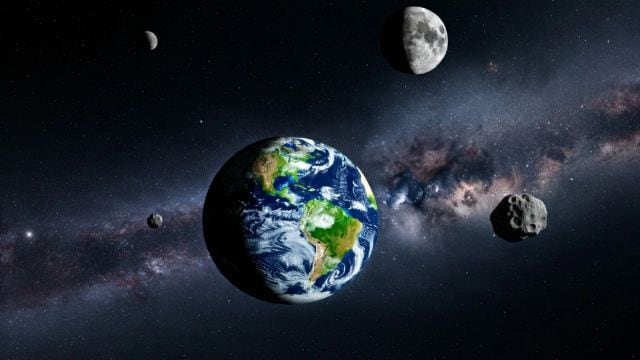Stay updated with the latest - Click here to follow us on Instagram
When and how to see seven planets align in night sky in rare ‘planetary parade’
Four planets—Mercury, Venus, Jupiter, and Mars—will be visible to the naked eye, while Saturn may be harder to spot due to its low position on the horizon. Uranus and Neptune will require a telescope.
 What makes tonight's planet parade rare is the string of planets and the moon being bright enough to be visible from Earth. (Representational Image)
What makes tonight's planet parade rare is the string of planets and the moon being bright enough to be visible from Earth. (Representational Image)Skywatchers are in for a celestial treat this week as seven planets—Mars, Jupiter, Uranus, Venus, Neptune, Mercury, and Saturn—will all be briefly visible in the evening sky.
This rare phenomenon, known as a “planetary parade,” won’t occur again with such clarity until 2040.
According to a report by BBC, the best chance to view all seven planets will be just after sunset on Tuesday through Friday. Four—Mercury, Venus, Jupiter, and Mars—will be visible to the naked eye, while Saturn may be harder to spot due to its low position on the horizon. Uranus and Neptune will require a telescope.
What is a Planetary Parade?
A planetary parade, or planetary alignment, occurs when multiple planets appear to line up along the ecliptic plane from Earth’s perspective. While smaller alignments happen more frequently, this event stands out as it includes all seven visible planets.
Best Time to observe
The ideal time to witness this celestial event is approximately 45 minutes after sunset. Some planets will be bright and easy to spot, while others may require optical assistance:
– Venus – Brightly visible in the western sky just after sunset.
– Mars– High in the southern sky, remaining visible into early March.
– Jupiter – A bright object shining in the southwest.
– Uranus– Below the Pleiades star cluster, possibly visible to the naked eye in dark areas.
– Saturn– Close to the Sun, making it faint and difficult to see.
– Neptune– Requires a telescope for proper viewing.
– Mercury – Briefly appears in the west-southwest before setting.
Where can it be seen in India?
The planetary parade will be visible across India, with the best views in cities with minimal light pollution and clear skies. Residents in Delhi, Mumbai, Bengaluru, Chennai, Kolkata, Hyderabad, Pune, Jaipur, Lucknow, Noida, Indore, Kanpur, Guwahati, Gangtok, Ahmedabad, and Dehradun will have good opportunities to witness the event.
To make the most of this rare event, follow these simple tips:
- Find a Dark Location – Head away from city lights to maximize visibility.
- Use Binoculars or a Telescope – While some planets can be seen with the naked eye, optical aids will enhance the experience.
- Check the Weather Forecast – Clear skies are crucial for an uninterrupted view.
- Be Patient– Allow your eyes to adjust to the darkness for better visibility of fainter planets.
- 01
- 02
- 03
- 04
- 05






























